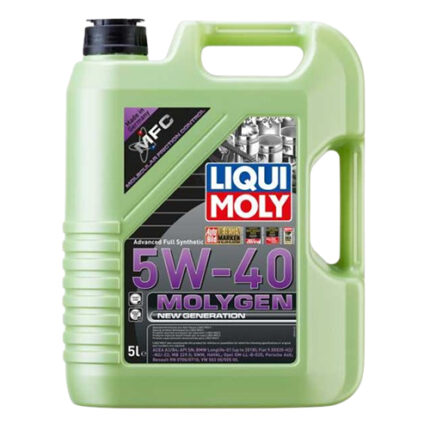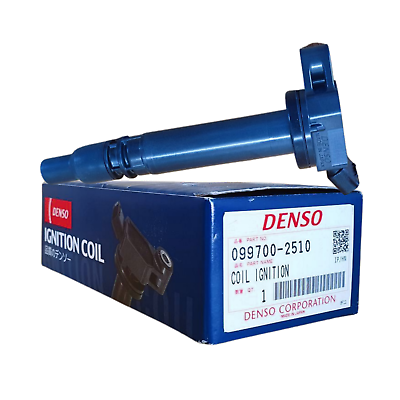Get Ignition Coil For Toyota with 2GRFSE 1URFSE / 2URFSE / 1ARFE / 1GRFE Engines in Kenya
An ignition coil is an integral component of a vehicle’s ignition system, responsible for converting low-voltage electricity from the battery into the high-voltage energy necessary to ignite the fuel-air mixture in the engine’s combustion chamber. This process ensures smooth engine operation, power generation, and overall vehicle performance. In this detailed guide, we’ll explore the functions, types, benefits, maintenance tips, and potential problems related to ignition coils.
What is an Ignition Coil?
An ignition coil, also known as a spark coil, is a type of transformer in a vehicle’s ignition system. Its primary function is to amplify the 12-volt output from the battery to tens of thousands of volts. This high voltage is required to create an electric spark in the spark plugs, which ignites the fuel-air mixture inside the engine’s cylinders.
The ignition coil operates using principles of electromagnetic induction, with a primary winding (low voltage) and a secondary winding (high voltage) working together to create the necessary energy transformation.
How Does an Ignition Coil Work?
The ignition coil’s operation is part of a larger ignition system, which includes the spark plugs, distributor (in older systems), and an electronic control unit (ECU) in modern vehicles. Here’s a step-by-step breakdown of its function:
- Low-Voltage Input:
The ignition coil receives a low-voltage current from the car battery. - Electromagnetic Induction:
The current flows through the coil’s primary winding, creating a magnetic field. When the current is suddenly interrupted by the ECU or ignition switch, the collapsing magnetic field induces a much higher voltage in the secondary winding. - Voltage Transformation:
The ignition coil amplifies the voltage from 12 volts to as high as 40,000 volts. - Spark Generation:
The high-voltage current is delivered to the spark plugs, where it jumps the gap to create a spark that ignites the fuel-air mixture in the engine cylinder.
Types of Ignition Coils
- Canister Coils:
These cylindrical coils are common in older vehicles and work with mechanical distributors. They are mounted externally on the engine. - Coil Packs:
Modern vehicles use coil packs, which group multiple ignition coils into a single unit. Each cylinder has its coil, eliminating the need for a distributor. - Coil-On-Plug (COP) Coils:
This type integrates the ignition coil directly onto the spark plug, ensuring precise timing and reducing the need for ignition wires. - Distributorless Ignition Coils (DIS):
These systems use multiple coils to serve pairs of cylinders, simplifying the ignition system and improving reliability.
Benefits of Ignition Coils
- Efficient Ignition:
Ignition coils ensure the spark plugs receive sufficient voltage to ignite the fuel-air mixture, improving engine performance and fuel efficiency. - Enhanced Engine Power:
With proper voltage delivery, the engine runs smoothly, delivering maximum power output. - Reduced Emissions:
Precise ignition timing minimizes incomplete combustion, reducing harmful emissions. - Durability:
Modern ignition coils are designed to withstand high temperatures and vibrations, ensuring long-lasting performance. - Simplified Maintenance:
Coil-on-plug and distributorless systems reduce the number of components, making maintenance more straightforward.
Signs of a Faulty Ignition Coil
A malfunctioning ignition coil can cause several problems that may impact vehicle performance. Common signs include:
- Engine Misfires:
A weak or failing coil may not generate enough voltage, causing the engine to misfire or run rough. - Poor Fuel Economy:
Inadequate combustion leads to increased fuel consumption. - Difficulty Starting the Engine:
A faulty ignition coil may make it hard to start the engine, especially in cold conditions. - Check Engine Light:
The vehicle’s onboard diagnostic system may detect ignition coil problems, triggering the check engine light. - Loss of Power:
A defective ignition coil can result in reduced engine power, particularly during acceleration. - Backfiring or Stalling:
Unburned fuel due to weak spark can cause backfiring, while intermittent coil operation may lead to stalling.
Common Causes of Ignition Coil Failure
- Overheating:
Prolonged exposure to high temperatures can cause the coil’s insulation to degrade, leading to failure. - Electrical Overload:
Voltage surges or faulty wiring can overload the coil, damaging its internal components. - Wear and Tear:
Ignition coils experience wear over time due to constant operation, especially in high-mileage vehicles. - Moisture or Contamination:
Water, oil, or dirt entering the coil housing can lead to corrosion and short circuits. - Faulty Spark Plugs:
Spark plugs with incorrect gaps or excessive resistance can place additional stress on the ignition coil, causing it to fail prematurely.
Maintaining Your Ignition Coil
- Regular Inspection:
Periodically inspect ignition coils for cracks, corrosion, or signs of wear. - Replace Spark Plugs:
Ensure spark plugs are replaced at the recommended intervals to prevent excessive strain on the ignition coil. - Keep the Engine Clean:
Prevent contamination by maintaining a clean engine compartment. - Monitor Engine Performance:
Pay attention to signs like misfires or rough idling, which may indicate coil problems. - Check Wiring:
Inspect ignition wiring for damage or loose connections that could impact coil performance.
Replacement of Ignition Coils
When replacing an ignition coil, it’s crucial to choose a high-quality part compatible with your vehicle’s make and model. Here are the general steps:
- Identify the Faulty Coil:
Use a diagnostic tool to pinpoint which coil needs replacement. - Disconnect the Battery:
This ensures safety during the replacement process. - Remove the Faulty Coil:
Disconnect the electrical connector, unbolt the coil, and carefully remove it. - Install the New Coil:
Place the new coil in position, secure it with bolts, and reconnect the electrical connector. - Test the System:
Start the engine and check for smooth operation.
Choosing the Right Ignition Coil
When selecting an ignition coil, consider the following factors:
- Compatibility:
Ensure the coil matches your vehicle’s specifications. - Brand Reputation:
Opt for trusted brands known for quality and durability. - Warranty:
Look for products with a solid warranty to ensure peace of mind. - Performance Needs:
High-performance vehicles may require specialized ignition coils.
FAQs About Ignition Coils
- How long do ignition coils last?
Typically, ignition coils last between 100,000 to 120,000 miles but may vary based on driving conditions and maintenance. - Can I drive with a faulty ignition coil?
Driving with a bad coil can damage other engine components and should be addressed promptly. - What happens if all coils fail?
The engine will not start as there will be no spark to ignite the fuel-air mixture. - Are aftermarket coils reliable?
Quality aftermarket coils can be reliable, but it’s essential to choose reputable brands.
Conclusion
The ignition coil is a critical component of a vehicle’s ignition system, ensuring efficient engine operation through reliable spark generation. Understanding its functions, benefits, and maintenance can help vehicle owners ensure long-term performance and avoid costly repairs. By choosing high-quality coils and addressing issues promptly, you can maintain optimal engine functionality and enjoy a smoother driving experience.
Follow us on Facebook for more parts.




Reviews
Clear filtersThere are no reviews yet.